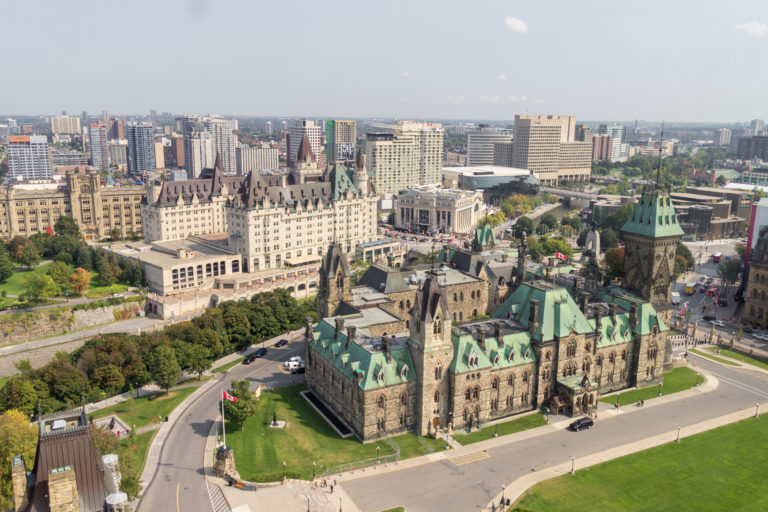Canada is making the Rural and Northern Immigration Pilot (RNIP) a permanent immigration program this autumn and is also launching two new pilots to expand the ability of rural communities to attract more immigrants, in particular francophones.
“I am here to confirm that Immigration, Refugees and Citizenship Canada (IRCC) will make the RNIP permanent,” said Immigration Minister Marc Miller in Sudbury on March 6.
The new, permanent program will be called the Rural Immigration Program (RIP) and will be launched this autumn along with the new pilot programs.
The two new pilots will be the Rural Community Immigration Pilot (RCIP) and the Francophone Community Immigration Pilot (FCIP).
The RCIP will launch in the fall of 2024.
Read More Canada Immigration News
Finland Youth Now Qualify For International Experience Canada
Canada to Ignore Quebec’s Cap and Speed Up Family Reunification Immigration
Attestation Letters For International Students Sent To B.C. To Colleges And Universities
That new pilot will try to ensure rural communities continue to have the ability to access programs that address labour shortages and help local businesses find the workers they need. It will provide pathways to permanent residence for newcomers who can help to overcome critical labour job shortages and want to live long term in these smaller communities.
The FCIP, which will also be launched this autumn, will focus on increasing the number of French-speaking newcomers settling in francophone minority communities outside of Quebec and will help ensure the economic development of francophone minority communities, while also helping to restore and increase their demographic weight.
Number of francophones expected to increase with new pilot program
“It has the capacity of doubling the number of people coming to this community,” Miller said in Sudbury.
Businesses in the biggest city in northern Ontario were worried the pending end of the RNIP this year and had called on Ottawa to make the RNIP permanent.
In an open letter to local Members of Parliament, Viviane Lapointe and Nickel Belt Marc Serré, the Greater Sudbury Chamber of Commerce had urged that the RNIP become a permanent program.
“If you talk to any business owner and our members, a big challenge they’ve had over the last few years is finding talented labour and skilled labour and the … program is something that facilitates that,” Geoffrey Hatton, chair of that chamber of commerce and president and CEO of Spectrum Telecom Group, reportedly told CTV News.
“Twenty per cent of our staff (are) international hires, so it’s a big impact for us.”
As of the end of last year, 4,595 newcomers had gotten their permanent residence through the RNIP.
The latest IRCC data reveals that Canada welcomed 2,855 new permanent residents through the RNIP.
Ontario received the lion’s share of RNIP immigrants last year, 1,865, while British Columbia welcomed 665 new permanent residents through the program.
Through the RNIP, Manitoba welcomed 190 new permanent residents last year, Saskatchewan 90, and Alberta 45 in 2023.
This year, the RNIP started off strong with 680 new permanent residents arriving through the program in January alone.
Watch Video
The findings of a Northern Policy Institute report, Community Immigration Pilot Making Economic ‘Cents’: How the Rural and Northern Immigration Pilot is Growing the Local Economy in Thunder Bay, highlight the importance of that immigration program to rural and northern communities.
“The RNIP helps to attract immigrants to smaller communities by providing them with a path to permanent residency,” states the report.
“In turn, it gives communities the opportunity to select which workers have the most desired skills by their local industries and are the most likely to settle and stay in that northern or rural community in the long term.
“By doing so, the RNIP benefits both skilled immigrants and smaller communities at the same time.”
Eleven Communities Participate In The RNIP
To be included in the pilot which has been extended until such time as the permanent version of it is launched later this year, communities must:
- have a population of 50,000 or less and be located at least 75km from the core of a census metropolitan area, or;
- have a population of up to 200,000 people and is considered remote from other larger cities, according to the Statistics Canada Remoteness Index.
Here are the participating communities in the pilot program:
| Community | Community website |
| North Bay, ON | https://northbayrnip.ca/ |
| Sudbury, ON | https://investsudbury.ca/why-sudbury/move-to-sudbury/rnip/ |
| Timmins, ON | www.timminsedc.com |
| Sault Ste. Marie, ON | www.welcometossm.com |
| Thunder Bay, ON | https://gotothunderbay.ca/ |
| Brandon, MB | www.economicdevelopmentbrandon.com |
| Altona/Rhineland, MB | www.seedrgpa.com |
| Moose Jaw, SK | https://www.moosejawrnip.ca/ |
| Claresholm, AB | www.claresholm.ca |
| Vernon, BC | https://rnip-vernon-northok.ca/ |
| West Kootenay (Trail, Castlegar, Rossland, Nelson), BC | https://wk-rnip.ca/ |
Candidates for immigration through the RNIP must meet both the federal and the community eligibility requirements.
The federal requirements include qualifying work experience or an international student exemption.
Candidates must have one year (1,560 hours) of full or part-time work experience in the last three years but it doesn’t need to be continuous or be with just one employer. It must, however, include most of the main and essential duties listed in the National Occupational Classification (NOC) and unpaid and self-employed hours do not count.
Candidates who are international students are exempt from needing work experience provided they either graduated with a master’s or doctoral degree or:
- graduated with a credential from a minimum two-year-long post-secondary program in the recommended community;
- were studying as a full-time student for the full duration of two or more years;
- received the credential no more than 18 months before the date of application for permanent residence, and;
- they were in the community for at least 16 of the last 24 months spent studying to get the credential.
Those who graduated with the higher degrees must still:
- have studied as a full-time student for the duration of the degree in the recommended community;
- received the degree no more than 18 months before applying for permanent residence, and;
- have been in the community for the length of their studies.
RNIP Applicants Must Meet Language Requirements
There are basic minimum language requirements for the RNIP with the level required based on the classification of the job under the National Occupational Classification system. Candidates must also have a Canadian high school diploma or an equivalent foreign credential with an accredited Educational Credential Assessment (ECA) report.
The language proficiency can be demonstrated through either the Canadian Language Benchmarks (CLB) or Niveaux de compétence linguistique canadiens (NCLC) standards.
These results must be submitted from a designated language test and be less than two years old at the time of the application.
Under the program, applicants must demonstrate they have enough money to support themselves and family members while they get settled in their community. This includes family members who may not be coming to Canada.
Candidates already working legally in Canada are exempt from settlement fund requirements.
This money cannot be borrowed from another person and the proof of funds can include:
- bank account statements;
- documents that show real property or other investments (such as stocks, bonds, debentures or treasury bills), or;
- documents that guarantee payment of a set amount of money payable such as banker’s drafts, cheques, traveller’s cheques or money orders.










